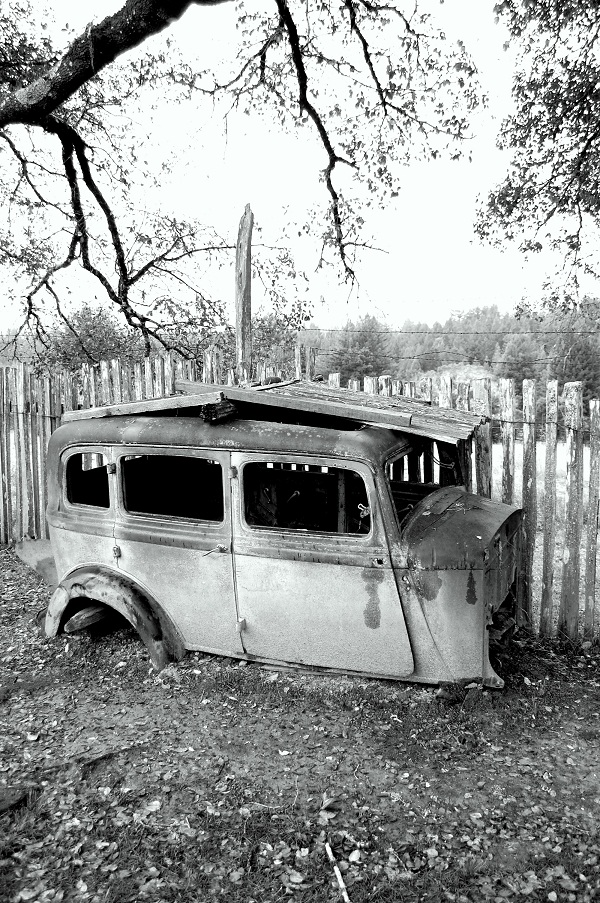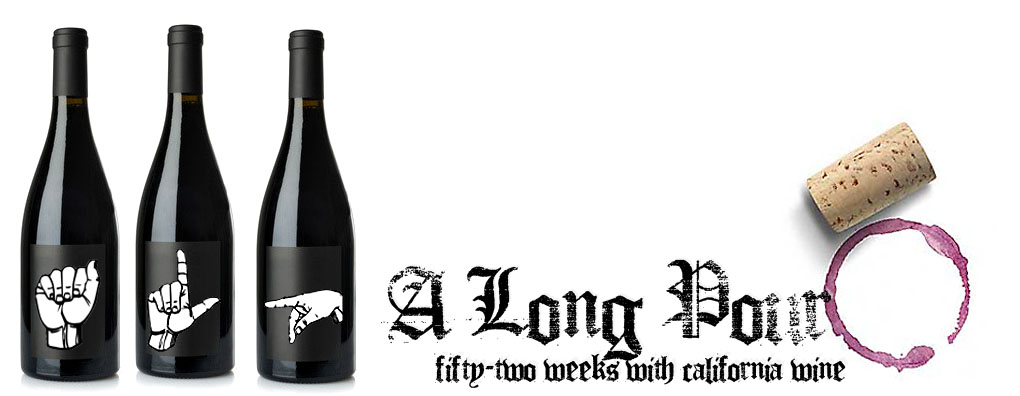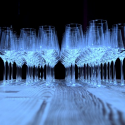Husch Vineyards – Promise of a New Vintage
It’s not the destination, it’s the journey…or so they say.
When I decided to take on 52 weeks of California wine last year, I wanted a journey. I expected to go places I had not yet been to and to see things I had not yet imagined. I did both. From windswept hidden vineyards to some of the most iconic establishments in California wine, I have voyaged far and wide. There has been plenty of reward, in experiences, in friendships, in companions, in wine, and so I voyage on into my second year.
Winemakers too have their personal voyages. They come from all walks of life, all corners of culture and background. Some were raised with vineyards and barrel rooms for playgrounds and others stumbled upon winemaking by chance. But the destination can be elusive for winemakers, a moving target, concrete today and eroded tomorrow.
 American winemakers are notorious for moving from winery to winery and even region to region. For example, these are the location changes a few winemakers I know have made over the years: Edna Valley to Burgundy to Foxen Canyon to Ojai. Santa Cruz to New Zealand to Happy Canyon. Santa Barbara to Santa Cruz to Australia to France, back to Australia, to Santa Barbara. The destinations change as the voyages continue.
American winemakers are notorious for moving from winery to winery and even region to region. For example, these are the location changes a few winemakers I know have made over the years: Edna Valley to Burgundy to Foxen Canyon to Ojai. Santa Cruz to New Zealand to Happy Canyon. Santa Barbara to Santa Cruz to Australia to France, back to Australia, to Santa Barbara. The destinations change as the voyages continue.
Epiphanies, however, can be found both in the voyage and in the destination. On occasion, it is the destination that starts the true voyage, that perfect place in the world that plants a seed of motivation in the winemaker’s heart and inspires them to stay, to see what takes root.
It was in this way that Husch Vineyards was founded in the Anderson Valley. It was here that a destination unlocked a voyage that continues into its third generation.
Tony Husch fell in love with the Anderson Valley. Like Richard Sanford in Santa Barbara County, Tony was the first to plant Pinot Noir in the rugged valley. I had to wonder, had he too searched far and wide the way Richard had, in search of that perfect piece of earth to cultivate a passion for Pinot Noir? Was it a love of the varietal that compelled him to plant it there?
It is a question Brad Holstine, Winemaker for Husch Vineyards and a self described Pinotfile has wondered as well. “I have asked that question myself,” he said as we tasted through a few of their white wines in their rustic tasting room. I had come to the Anderson Valley on a rainy weekday in early December to meet with him and his wife and winery co-owner Amanda Holstine.
“We are so lucky to have Al White our Vineyard Manager who worked with Tony,” Brad continued. “So I asked him, ‘was [Tony] a Pinotfile, was he into Burgundy?’ And no, he just learned from other people’s mistakes. Just like everywhere, you plant certain varietals [in an area] that just aren’t going to ripen and you start thinking a little bit about it and you find the things that will. ”
It was the land itself, the destination that held the most appeal for Tony, not the varietals he could grow there. “He was about the land”, Amanda explained. “He was truly about the land and where he wanted to be with his wife.”
In time, Tony sold the winery to Amanda’s Grandfather, himself a grape grower, who he had been buying fruit from for years. It was a new chapter in the wineries history as well as for Amanda’s family.
“There were a lot of lessons to be learned,” Amanda says about the early years, but the family remained committed to what Tony had set in motion. Through the decades that followed, Husch has remained a family owned and operated winery. Amanda’s Father was president throughout the 80’s and into the 90’s. Her Uncle saw the winery through the later 90’s and as the World slipped into a new millennium, Husch slipped into its third generation of family vintners. “In the early 2000’s my brother and I, who were off doing other things in our lives, made the commitment to come back home to take it on,” she says. “So it’s third generation, totally family operated. You name it we do it.”
And they do it well. It isn’t all the time that I enjoy virtually every wine a particular winery has to offer. I think of Tablas Creek, The Ojai Vineyard, or Zaca Mesa. These wineries know what they do well and so they do it. To this list I would now add Hush. The wines were a joy to drink and I loved everything from their earthy Pinot Noir to their flagship Sauvignon Blanc. As a few winemakers I know would say, “they have their heads screwed on straight.”
Even the winery is a reflection of the practical approach to wine making at Husch. Almost Zaca Mesa-like in its spirit, the focus is where it should be, the wines.
When asked what their definition of a “good wine” was, their answers were telling of what they are working hard to accomplish at Husch.
“It’s all Husch wine of course,” Amanda said with a good natured laugh. She continued, “what we try to achieve is food friendly wines. It’s about making sure they are food friendly, high acid, nice fruit, true to varietal character. And that’s fun for us, trying to making sure that when we are doing a food pairing that we have plenty of [wine] options that will enhance your meal and that your meal isn’t your drink. It’s pretty unique to have that these days.”
After a tour of the property which included their hundred year old former pony barn that now serves as their tasting room, I was able to ask Brad about his interests in Pinot Noir and how a one time Engineer came to be a winemaker on the edge of the wilderness.
ALP: What makes Anderson Valley a special place?
BH: “I could say what you have heard before. I like the appellation for its light red high-tone raspberry fruit. I like the feminine quality about it. We make our wines in that style. We are not going after heavy extraction, we are not going after a lot of oak, we are letting the wine talk for its self. There is a lot of earth in the Pinot [here], earth and pretty high-tone red fruit.”
“From a winemaking perspective I am pretty lucky because I have a bunch of things to play with. My passion is Pinot Noir and Sauvignon Blanc, but I have so many things to play with.”
ALP: Where did your interest in Pinot Noir come from?
BH: “My passion for Pinot came from San Luis Obispo, from your neck of the wood. I was working at a winery [while] studying engineering.”
ALP: You worked at a winery while you were going to school?
BH: “Yeah I worked at Saucelito Canyon, Claiborne and Churchill, and Cottonwood Canyon.”
“I became Cellar Master at a winery, it was pretty much all me. So I got a great start, I had autonomy. When you are in that position, [on your own], you step it up, you study and you learn more and you taste a lot. The funny thing was I saw a lot of parallels in what I was doing at school., thermo and heat transfer, wet chemistry and all this stuff I was learning for the first time as a student I was immediately applying to wine, straight forward stuff, not rocket science by a long stretch. So it helped me with school and it also helped with a career choice as well.”
 “So I did that, graduated, became an Engineer…I was working for Summit Engineering which is an Engineering firm in Santa Rosa that pretty much focuses on building wineries. So I moved from Monterey to Healdsburg. Everyday I was going to visit wineries, Paul Hobbs, Opus One, we worked on all of those projects. So it doesn’t take long to get the bug again so I found myself back in the wine industry.”
“So I did that, graduated, became an Engineer…I was working for Summit Engineering which is an Engineering firm in Santa Rosa that pretty much focuses on building wineries. So I moved from Monterey to Healdsburg. Everyday I was going to visit wineries, Paul Hobbs, Opus One, we worked on all of those projects. So it doesn’t take long to get the bug again so I found myself back in the wine industry.”
ALP: Do you have a favorite aspect of your job as a winemaker?
BH: “I think I alluded to it earlier, the infinite variables. Everything that is possible. The bottom line is; there is always the promise of a new vintage. You get to take what you learn and build up a knowledge base… So infinite variables, the promise of a new vintage.”
“Even if I was just making Pinot Noir and Chardonnay, I would still see it the same way. If you were only worried about getting barrels, if you were associate winemaker for a big winery and it was your job to get barrels, you could still find infinite variables [in that]and could play with it for a few years. You take that coupled with yeast strains, coupled with fermentation styles, coupled with temperatures, coupled with fining, with blends; it’s more than anyone can get their arms around.”
I was unable to get to this story for about two months after the interview, long enough to forget some of the details of Brad and I’s conversation. I now have dozens of hours of audio recordings from winemakers from across California. Only a small fraction of those recording goes back into these articles. They are incredibly insightful, both for what is said and what is now. As I got back to work on this story for Husch, I was struck by how intelligently Brad spoke about his craft, his wines, and his place in the Anderson Valley. Maybe it is his training as an engineer, his acute attention to detail, but Brad is a winemaker that is deeply connected to what he is doing, how he is doing it, and most importantly why he does it. It is not location alone that makes a great wine; it needs an artist, a craftsman, an engineer to give it voice.
In Husch there is history, there is pride in craft. Here in the Anderson Valley, where the land matters, and the people matter, and the history of it all matters, they will continue to look forward to the future and the promise of a new vintage.
4400 Highway 128, Philo, CA 95466 1-800-55-HUSCH (1-800-554-8724)


